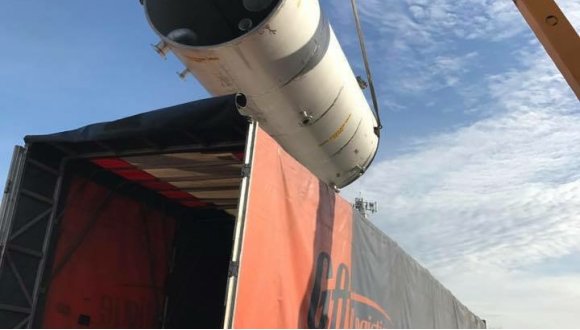
Purchasing used process equipment can be an incredible investment, that is, if your heavy equipment transport goes according to plan. Otherwise, even the savings you made by buying second hand will be lost when your new piece of equipment arrives damaged or doesn't arrive at all. Taking the right precautions at the transportation stage is important.
1. Check the Manual
Manuals can be useful for preparing your equipment for transportation. Whether in print or electronic form, this important resource should outline the best way for the machinery to travel, whether that means partial disassembly, draining of certain fluids, or even taking advantage of certain built in aspects of the item designed for easing transportation.
2. Cover Necessary Parts
Depending on the vehicle on/in which your piece of equipment will be transported, the entire piece or part of it may be exposed to nature's elements. Though that could be normal for certain heavy duty pieces of equipment, others might need additional protection, at least for parts of it. This could involve using tarps, special coverings, or specific sprays.
3. Arrange the Right Kind of Truck
When arranging heavy equipment transport, you will need the right kind of vehicle to do it safely. Firstly, the weight of your machinery must be supported by the type of trailer you choose. Secondly, each type comes with its own pros and cons. Flatbed trailers don't have sides or a roof which makes them very versatile and easy to load and unload. However, they offer no protection from nature’s elements, something that could be a problem if your equipment is delicate or could be affected by rain. For oversized items that are very tall or wide, a double drop trailer offers an extra vertical "drop" between the middle axles, sometimes called ‘’the belly’’. It allows for large items to be transported without having to worry about being affected by overpasses, bridges, or even common drag. A dry box trailer is what most trucks on the road tow. The positive aspect of this kind of trailer is that it protects the equipment from the elements. On the flipside, the entire piece of equipment has to conform or fit within the four walls and roof, and can make loading and unloading a bit more difficult.
4. Secure Appropriately
Transporting heavy equipment commands special attention to the security of the item(s) during transportation. Depending on the nature, weight, and shape of the piece of machinery, it could require the use of chains, straps, anchors and more.
5. Handling During Pickup and Drop Off
No one wants to witness damage to equipment before it even hits the road, just like it would be horrible to see it damaged after it had come all the way to its new home. That's why it's important to have a plan for loading and unloading which incorporates the right tools like adapted forklifts, cranes, and more. You might find that you will need to use a combination of these tools to safely and securely move your equipment from the loading dock to its final resting place. Once again, see what the manual suggests and remember that weight and shape will be a major factor in the plan you put together.
6. Have the Right Permits
Transportation of your equipment will require you to attain the appropriate paperwork and permits, especially if the item is overweight or oversized. These permits can take some time to process, so set the wheels in motion has soon as you can so that transportation delays won't be an issue.
Get your business into high gear by safely and securely transporting your newest heavy equipment additions to your operations. When you follow these precautions, you minimize the risk that your items leave or arrive damaged, avoiding putting a dent in the investment you have made.
